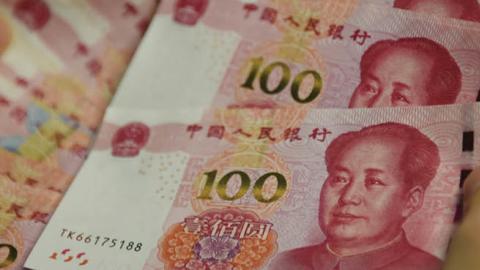In 2019, the World Bank warned that a growing debt wave made emerging markets and developing economies vulnerable to a “sudden global shock,” which “would trigger a downturn in these economies, posing risks to global…growth.” With COVID-19 that sudden shock has arrived. While world leaders are working to preempt the crisis, African nations are seeking relief directly from a major creditor: China.
This bilateral approach will likely prove ineffective. A sharp increase in Chinese lending to the world’s poorest countries over the last decade has contributed to over half of them, most in Africa, being at high risk of debt distress. But China’s problematic lending practices—secrecy about its loans, demanding payment in commodities—suggest that Beijing, on its own, is unlikely to provide terms beneficial to its debtors. Instead, the United States should lead a coordinated, multilateral campaign of debt forgiveness predicated on radical transparency, including from China.
Estimates made using World Bank data indicate 20 percent of African government debt is owed to China. But that data is incomplete. “China’s rise as global creditor,” as Harvard’s Carmen Reinhart put it, “has also meant that there are a lot of hidden debts.”
Many Chinese loans are made by state-owned banks at commercial rates, rather than by the Chinese government itself, and unreported to the World Bank. And China is not a member of the “Paris Club,” an organization of creditor states which tracks official lending. The true level of Chinese debt in the world, thus, is unknown.
Reinhart’s research suggests that about half of all Chinese lending, roughly $200 billion dollars, is hidden. This would mean that emerging markets and developing markets owe more to China ($384 billion) than to the 22 members of the Paris Club ($246 billion).
Chinese debt is not only hidden, but often backed by public-sector assets as collateral. Default can result in China assuming control of critical infrastructure, as happened with the Sri Lankan port of Hambantota. In some cases, payment may be due not in money but in commodities. Venezuela is believed to owe China debts denominated in barrels of oil.
This, then, will be a debt crisis with Chinese characteristics. The usual response—relief from debt owed to Paris Club government lenders or bilateral negotiations by China’s debtors to restructure their debt—will not only prove ineffective, but counter-productive.
Any action by the Paris Club alone, based on available, but inaccurate, financial data, will leave potentially larger Chinese debts unaffected. Debtor countries could still either be forced to pay hidden debts owed to Chinese banks or default on those loans, forsaking their infrastructure or commodities.
Any agreement with China, whether bilateral or even through the G-20, for example, that only addresses government-to-government debts would also provide little relief, since many of China’s loans are made through state-owned banks.
A new approach, therefore, is necessary. One that expands the types of both creditors and debt involved. China must be included in a coordinated international debt relief strategy. And all debts owed by the debtor nation, whether to Paris Club members and multilateral lenders or not, whether to sovereign governments or to state-owned banks or other entities, and whether payable in money or in commodities, must be taken into account.
The United States should take the initiative to create this new approach. It should propose to expand the Paris Club or create a new, larger organization of creditors. And it should call for this group to write down substantially, e.g., by 90%, the sovereign debt of low-income countries. A key condition, however, must be the inclusion of debts owed to state-owned enterprises as well as to states themselves. Loans that require repayment in kind must also be included, since these requirements will detract from the states’ future revenues. New reporting and transparency standards for future lending should be adopted at the same time.
China will likely balk at these provisions, preferring to negotiate restructuring its loans bilaterally and in secret. But a multilateral forum in which global action is predicated on Chinese cooperation is the only way to force Beijing to come clean on its lending practices.
Developing countries that have undergone a change in government, Sudan for example, perhaps Venezuela eventually, could further pressure China by invoking the notion of “odious debt, ” i.e., debt contracted for the benefit of those in power rather than the people. This would challenge the legitimacy of their debt to China, potentially leading Beijing to prefer multilateral negotiations over legal proceedings.
Even before the pandemic, there was concern that Chinese lending practices were creating “debt traps,” which might pressure debtor nations to align with Chinese foreign policy ambitions or turn over key resources or facilities. The current financial crisis presents an opportunity to put the spotlight on these practices, to free developing countries from crushing debt and Chinese coercion, and develop new, transparent standards for international lending.
Read in RealClear Markets
















